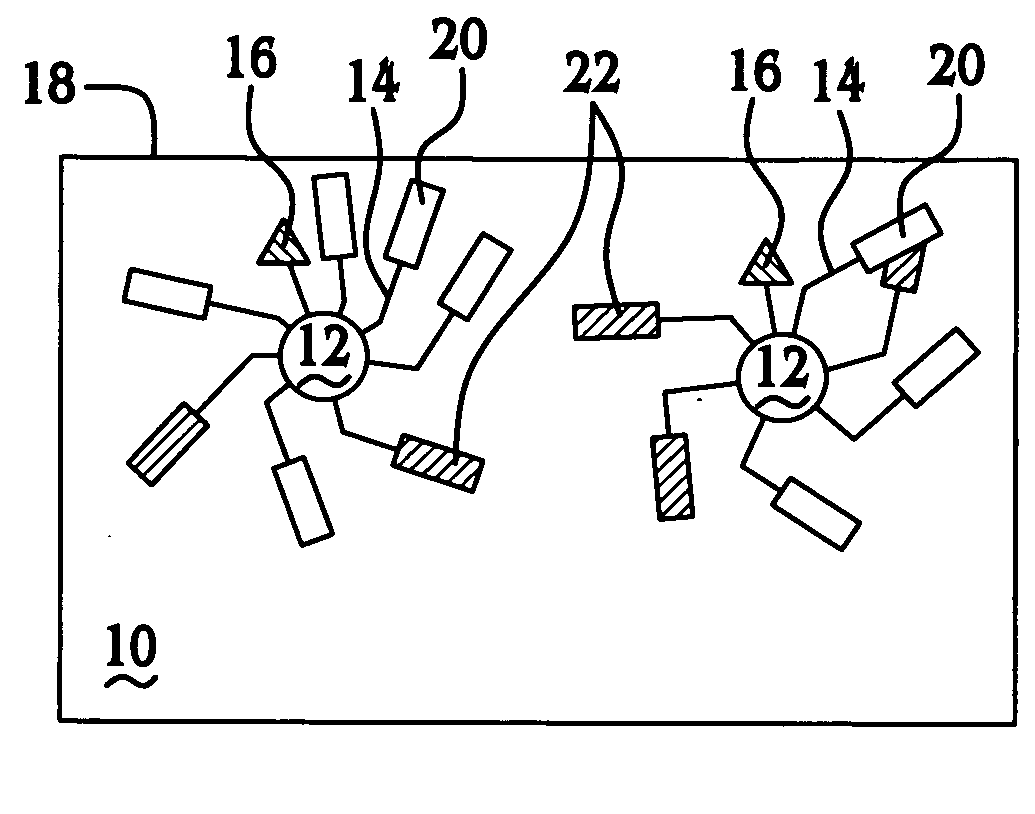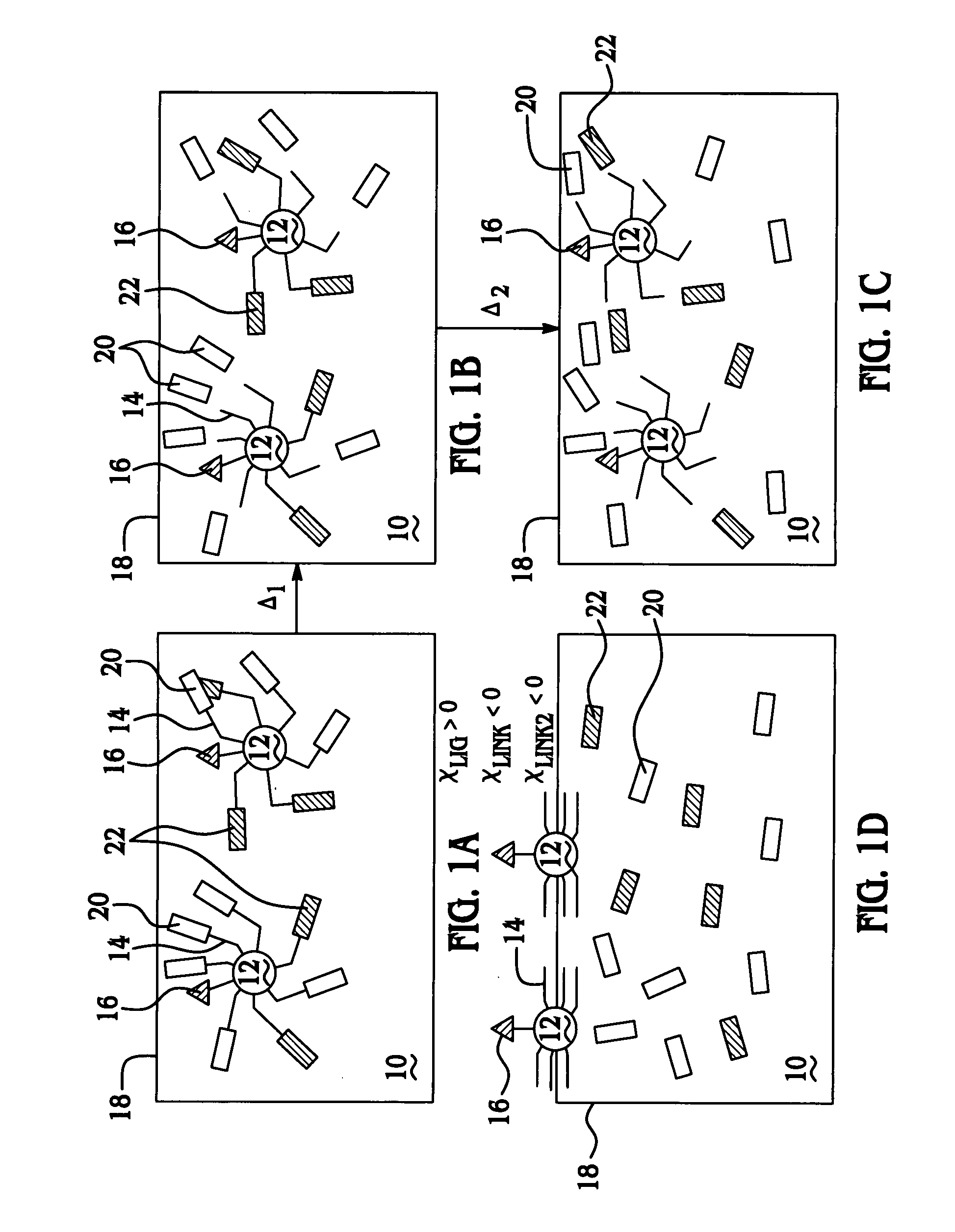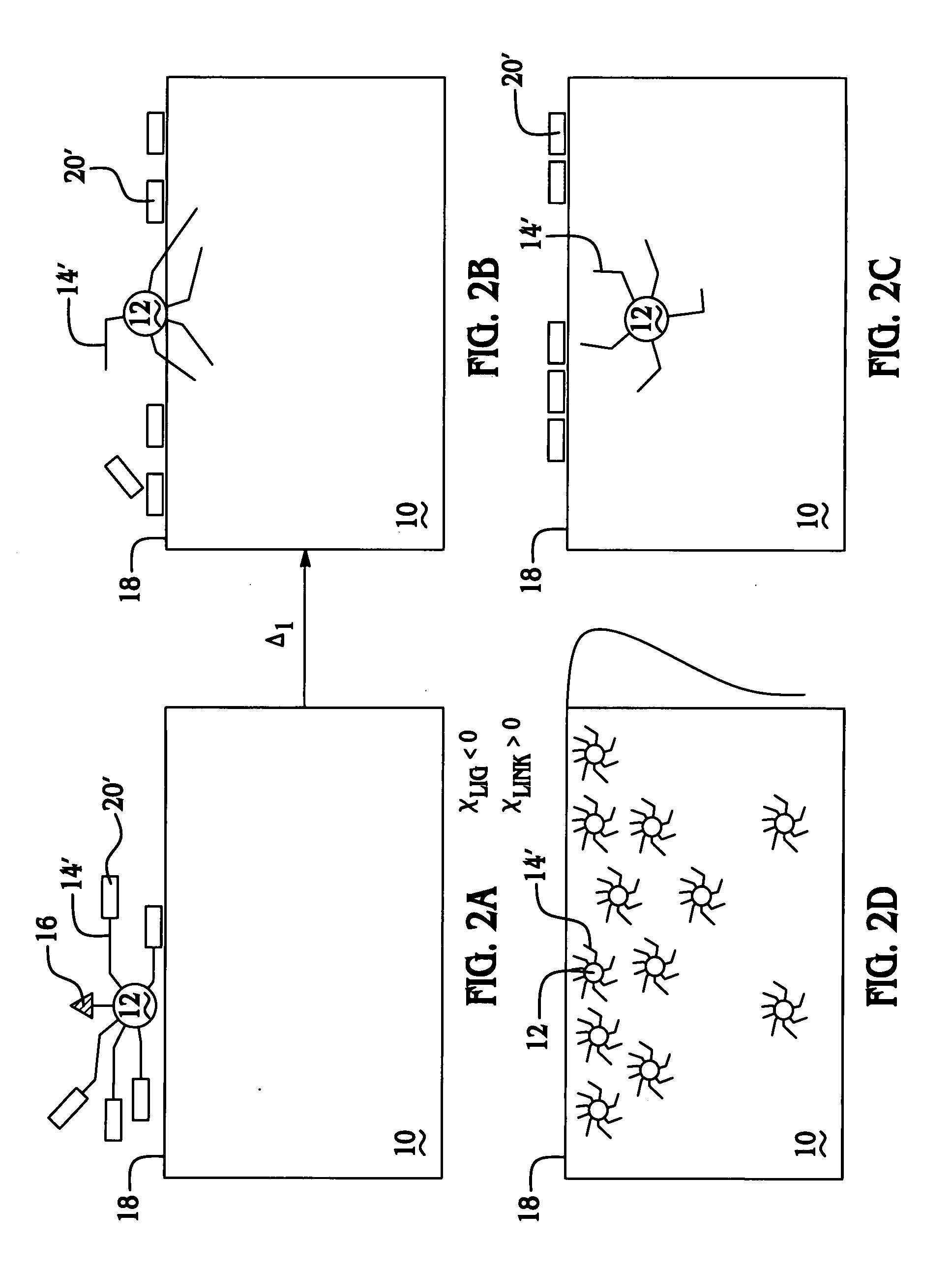Thermally controlled particulate core migration within polymer matrix
a technology of polymer matrix and particulate core, applied in the field of polymer matrix, can solve the problems of limited acceptance and achieve the effects of reducing the conformational energy requirement, significant and efficient, and improving the initial particle location
- Summary
- Abstract
- Description
- Claims
- Application Information
AI Technical Summary
Benefits of technology
Problems solved by technology
Method used
Image
Examples
example 1
Synthesis of Diels-Alder (DA) Linked Polyethylene Glycol (Link)-B-Polystyrene (Ligand) Copolymer Ligand-Linkage
[0056]Schemes S1 through S3 illustrate the synthetic route utilized to ultimately form the DA-linked PEG-b-PS copolymer ligand for nanoparticle functionalization. Commercially available α-methoxy-ω-hydroxy PEG (Mn—550 g / mol, PDI <1.05) is treated with methane sulfonyl chloride to convert the ω-chain end into a mesylate. After the addition of maleimide, N alkylation occurred under basic conditions to yield α-methoxy-ω-maleimido PEG (polymer 1) in 95% yield, Scheme S1. Reversible addition fragmentation transfer (RAFT) polymerization of styrene is chosen to address the need for an α-furyl-ω-mercapto PS, as previous work has demonstrated the facile transformation of the dithioester chain end to a mercapto functionality (1). Furyl alcohol is transformed into a RAFT polymerization initiator in two steps with an overall yield of 85%, Scheme S2. Typical RAFT polymerization conditio...
example 2
Gold Nanoparticle Synthesis
[0058]Au nanoparticles are prepared according to a previously published method (44), then characterized by small angle X-ray scattering (SAXS) and transmission electron microscopy (TEM). The SAXS data is well fit using a log-normal size distribution for a spherical particle shape. The particle size distribution mode is found to be 8.93 nm, the median 9.82 nm, and the mean 10.1 nm.
[0059]FIG. 8A depicts a typical TEM micrograph of oleylamine functionalized Au nanoparticles. Analysis using the ImageJ program resulted in a nanoparticle diameter of 12 nm±7 nm, which is in good agreement with size distribution determined from SAXS.
[0060]Next, α-furyl-ω-S-thiobenzoyl PS is treated with NaBH4 to prepare α-furyl-ω-mercapto PS, polymer 3, which is utilized in a ligand exchange reaction to passivate Au nanoparticles to yield polymer 3-Au, as shown in Scheme S3. Then, furyl functionalized Au nanoparticles are stirred at 60° C. in THF with excess equivalents polymer 1 ...
example 3
Synthesis of furyl-2-bromopropionate (Compound 1) of Scheme S2
[0061]Furyl alcohol (5.00 mL, 58.0 mmol), triethylamine (Et3N) (10.5 mL, 75.4 mmol), and CH2Cl2 (150 mL) are added to a 250 mL round bottom flask and cooled to 0° C. Next, 2-bromoprionyl bromide (7.30 mL, 69.0 mmol) is added dropwise slowly. The reaction mixture is stirred at RT for 12 h. H2O (150 mL) is added, and the reaction is then extracted with CH2Cl2 (2×100 mL), which is collected and dried over anhydrous MgSO4. Solvent is removed via rotary evaporation to yield Compound 1 (12.1 g, 89%) as a yellow liquid. 1H NMR: δ (ppm) 7.42 (1H, s), 6.42 (1H, d), 6.38 (1H; d), 5.13 (2, H, q), 4.37 (1H, q), 1.79 (1H, d); 13C {H} NMR 169.9, 148.7, 143.5, 111.7, 110.7, 59.3, 39.6, 21.6.
PUM
| Property | Measurement | Unit |
|---|---|---|
| Nanoscale particle size | aaaaa | aaaaa |
| Nanoscale particle size | aaaaa | aaaaa |
| Stability | aaaaa | aaaaa |
Abstract
Description
Claims
Application Information
 Login to view more
Login to view more - R&D Engineer
- R&D Manager
- IP Professional
- Industry Leading Data Capabilities
- Powerful AI technology
- Patent DNA Extraction
Browse by: Latest US Patents, China's latest patents, Technical Efficacy Thesaurus, Application Domain, Technology Topic.
© 2024 PatSnap. All rights reserved.Legal|Privacy policy|Modern Slavery Act Transparency Statement|Sitemap



